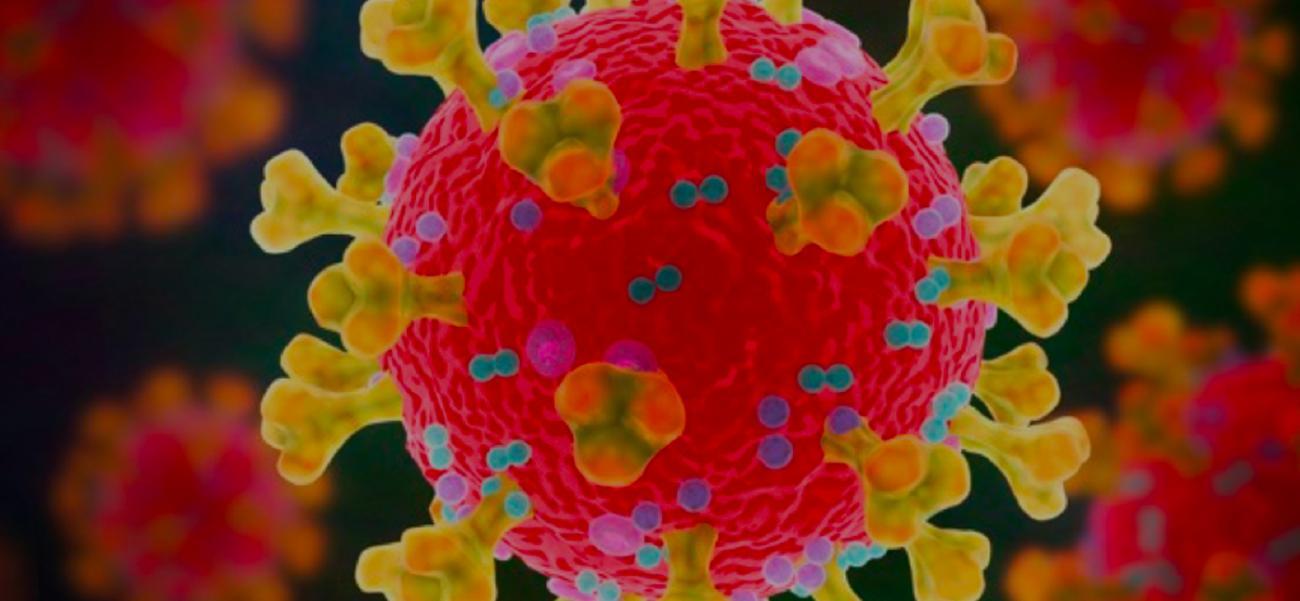What are the causes of COVID-19?
COVID-19 (coronavirus disease 2019) is an infectious respiratory disease caused by SARS-CoV-2, a virus in the coronavirus family which emerged in China in late 2019. After initially being named 2019-nCoV (2019 novel coronavirus), in February 2020 the virus was renamed "SARS-CoV-2" when it became clear that it was a SARS-type coronavirus.
Where did SARS-CoV-2 come from? How did the virus enter the human population? These questions still remain unanswered. An article published in March 2023, The origins of SARS-CoV-2: the search goes on, summarizes the latest findings, including the following points:
- The description of the first cases of SARS-CoV-2 in the vicinity of Wuhan market supports the hypothesis that the virus crossed the species barrier naturally from an intermediate host sold at this location. Scientists consider that this "zoonotic" hypothesis is the most likely explanation for the origins of SARS-CoV-2, but further research is needed to confirm it.
- A second hypothesis, developed in the SAGO report (by the Scientific Advisory Group for the Origins on Novel Pathogens (SAGO) established by the World Health Organization (WHO)), cannot be ruled out but has yet to be scientifically proven: the possibility that SARS-CoV-2 was introduced to the human population through a laboratory leak of a coronavirus, either a coronavirus preserved in its natural form or a laboratory-modified coronavirus, whether deliberately or by accident.
- Finally, the hypothesis that the virus was manufactured in a lab for subsequent introduction to the population is rejected by virtually the entire scientific community. This hypothesis has been supported mainly by fake news and controversial articles lacking any scientific basis.
What are the symptoms?
30 to 60% of people who carry the virus, especially young children, are asymptomatic. Others present mild, non-specific symptoms, including headache, fever, cough, diarrhea and fatigue. A sudden loss of smell and/or taste may occur in a number of infected individuals.
COVID-19 may progress to severe respiratory distress, sometimes requiring hospitalization or treatment in intensive care.
The most severe forms of the disease are mainly observed in elderly people and/or those with obesity, high blood pressure or diabetes.
As well as the short-term effects, some symptoms – chronic fatigue, neurological symptoms and breathing difficulties – can last for several weeks or even months. This is known as long COVID.
How does the disease spread?
COVID-19 mainly spreads after close and lengthy contact via droplets produced when talking and coughing. The virus can remain in suspension in the air via small droplets in a non-ventilated room, which is why wearing masks is effective. It is estimated that each infected individual infects two to three people, but this figure varies considerably: a subset of individuals is believed to be three times more likely to spread the virus to other individuals than the average person. SARS-CoV-2 can also continue to be infectious for several hours on inert surfaces, so good hand hygiene is important.
How is infection diagnosed?
There are different types of test:
- virological tests (RT-PCR), which determine whether a person is infected with the virus at the point of testing via a nasal or saliva swab. These are the most reliable tests.
- antigen tests, which also determine whether a person is infected at the point of testing; these tests are quicker but less reliable than RT-PCR tests;
- serology tests, which detect the presence of specific antibodies and determine whether a person has developed an immune reaction after coming into contact with the virus.
What treatments are available?
In most cases, symptomatic treatment for fever or pain, for example with paracetamol, is sufficient. Patients with severe pulmonary complications may receive respiratory support.
Immunocompromised individuals or those at risk of developing severe forms of the disease may be given antiviral treatments. These should be administered as soon as possible after confirmation of the diagnosis.
How can COVID-19 be prevented?
The best means of protection against COVID-19 is vaccination, which reduces the risk of developing severe forms of the disease and the ability to spread the virus. The immunity conferred by vaccination wanes over time, so booster vaccinations are needed for continued effective protection. mRNA vaccines are preferable because of their effectiveness. People who are reluctant or unable to receive this type of vaccine may be given other vaccines based on different technologies.
As well as vaccination, basic health and hygiene practices can reduce the spread of SARS-CoV-2. These include:
- Wearing a surgical mask that covers the nose and mouth. FFP2 masks offer higher filtration efficiency and therefore better protection.
- Regular hand washing (with water and soap) or use of hand sanitizer;
- Coughing or sneezing into your elbow or into a tissue;
- Avoiding touching your face;
- Using disposable tissues and throwing them away after one use;
- Avoiding shaking hands, kissing or hugging when greeting people;
- Keeping a distance of at least 1.5 meters from people you are speaking to;
- Regularly airing rooms.
How many people are affected?
As of August 15, 2023, 769,774,646 cases had been reported worldwide since the beginning of the pandemic, leading to 6,955,141 deaths. At the same date in France, 38,997,490 cases and 167,985 deaths had been reported.

All Covid-19 news from the Institut Pasteur
* To follow the latest news on the novel coronavirus, visit the World Health Organization website.
** To follow the evolution of current events in France, visit the website of the French Ministry in charge of health.
*** For the procedure to be followed in France, visit the Santé publique France website.
September 2023



